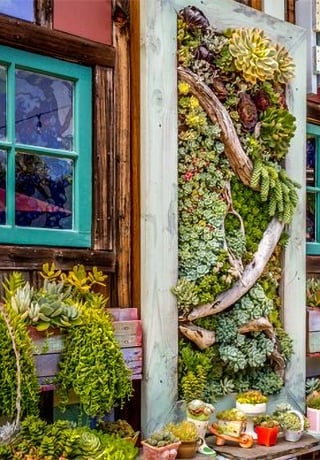Botanic Notables: Teddy-Bear Cholla
The Opuntia bigelovii (teddy-bear cholla) cactus has evolved barbed arms that will detach and cling to just about anything, in the hopes of traveling to a new place to root and begin a new colony.
Photo by: Anna Laurent, Joshua Tree National Park
With their chocolate-brown stems and fuzzy golden arms, the teddy-bear chollas really do seem friendlier than other desert dwellers. They tend to grow in clustered formations, like small societies in the sand, serving as a bright audience to the sun's rise and fall in the desert sky. If they appear to be waiting for something, it is you—to wander by, graze one of their many arms, and become an unwitting cholla propagator. There are two things to remember about the teddy-bear cholla: first, their segmented branches are eager to detach, travel, and take root; second, they are determined hitchhikers.
Similar to other species of cholla cacti, Opuntia bigelovii wear an armor of slender, barbed spines. Their sharp covering is particularly dense, which has the effect of obscuring the stem and shielding it from exposure to intense sunlight. Unlike other cholla, however, the arms are eager to detach from the central stalk—a brief encounter with the tiny barbs is enough to dislodge a fleshy segment. This fragment quickly embeds in any passerby; removal is painful and difficult. The cholla hopes to travel as far as it can, hitching a ride, because these easily fragmented stem segments are its preferred method of reproduction.
When finally removed, the detached joint will take root and begin a new colony. And it is a strategy that the teddy-bear cholla has evolved to rely on. While it does develop springtime flowers, the yellow-green blossoms produce fruit whose seeds are usually sterile. And so the vegetative arms are designed to detach so easily that even a strong wind can send the small segments tumbling. Asexually reproducing in this way, these cholla populations can become dense forests, sometimes composed of individuals that are in fact a single clonal plant, all grown from fallen, rooted branches.
As part of the desert ecology, teddy-bear cholla plants are popular nesting sites for birds. Desert pack-rats also collect the fallen cholla arms, carrying them back to their nest sites to build a threatening pile and discourage potential predators.
Opuntia bigelovii grow in the Mojave and Sonoran Deserts, on valley floors and desert hillsides. Joshua Tree National Park in Southern California also hosts a lovely Cholla Cactus Garden, complete with a quarter-mile walkway through the congregation.
Anna Laurent is a writer and producer of educational botanical media. Her photographs are available for exhibition and purchase at her shop.
